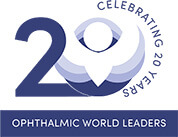Summary of the 2022 Ophthalmic Business and Leadership Trends Survey
The 3rd edition of the Ophthalmic Business and Leadership Trends Survey was launched in May 2022 in collaboration with the Fundingsland Group. This comprehensive survey assessed the current opinions and business practices of professionals across the ophthalmic industry and had more than 200 respondents including OWL members, practicing doctors, practice administrators/CEOs, and members of the ophthalmic/optometric industry. Similar surveys were conducted in 2014 and 2019 to use as a comparison of trends.
A SNAPSHOT OF RESPONDENTS
- The average respondent is 50 years old and has an estimated income of $198,000
- 97% of respondents reside in the US
- 57% have more than 15 years of experience in the ophthalmic industry
- 50% have post-graduate degrees
- 70% of respondents are in the ophthalmic industry and are not doctors nor administrators/CEOs
- 51% are senior-level executives or higher
Year-Over-Year Trends
Increased Racial/Ethnic Diversity
The composition of the OWL Respondents has become more diverse as shown in Figure 1. The percentage of participants not identifying as white/Caucasian grew from 21% in 2019 to 32% in 2022 (p < 0.05). In particular, this is driven by an increased representation of Hispanic/Latino (2019: 6%, 2022: 15%, p < 0.01) and Black/African (2019: 2%, 2022: 5%, p = 0.06).
Figure 1. Increase in racial/ethnic background since 2019
Increase in negotiation
The surveys also found that there was a steady increase in the percent of respondents that attempted negotiation in their last employment transition as shown in Figure 2.
Figure 2. Changes in Negotiation Behavior
This figure also shows that when respondents did not negotiate it is increasingly the case that it is because they were satisfied with the offer as-is. Interestingly, those satisfaction levels from those negotiations did not change over that period.
Overall, these results highlight that OWL members are increasingly engaging in practices such as negotiation and mentoring, suggesting a positive impact of the programs, events, and assets created and hosted by OWL.
OWL Members vs Non-Members
Income and Professional Roles
There were many interesting findings when comparing respondents who indicated that they were OWL Members to those who indicated they were not. Figure 3 shows that OWL Members tend to have higher salaries and this is particularly evident at the lowest (<$50,000; Non-Member: 19%, OWL Member: 1%, p < 0.001) and the highest (>$250,000; Non-Member: 13%, OWL Member: 50% p < 0.0001) end of the range. This figure also shows that OWL Members are more likely to occupy senior level or higher positions (Non-Member: 38%, OWL Member: 57%, p<0.05).
Figure 3. OWL Members and Non-Members Differ in their Industry Network
Industry Network and Connections
OWL Members and Non-Members also differ in their industry networks and how they’re able to leverage those networks. Figure 4 shows that OWL Members tend to be more satisfied with their industry networks (extremely satisfied; Non-Member: 16%, OWL Member: 38%, p < 0.05). This difference in satisfaction may be related to the fact that OWL Member’s most common way of finding out about their most recent position is industry colleague/word of mouth (Non-Member: 16%, OWL Member: 33%, p < 0.05) whereas Non-Members most common route is job posting via online search (Non-Member: 27%, OWL Member: 7%, p < 0.001).
Figure 4. OWL Members and Non-Members Differ in their Industry Network
Summary of OWL Members vs Non-Members
Analysis revealed a number of differences between these groups. Compared to Non-Members, OWL Members tended to:
- have a higher annual salary and have achieved higher levels of education.
- work in the ophthalmic industry, work remotely, and/or be top executives/managers.
- attempt negotiation for higher compensation and when they did not negotiate it tended to be because they were satisfied with the offer as-is.
- have higher levels of satisfaction with both their job and their industry network.
- have found out about their most recent position through industry colleagues/word of mouth whereas Non-Members were far more likely to find their position through a job posting via online search.
- participate in formal mentoring programs.
While the difference between OWL Members and Non-Members is unlikely to be causal, these results do highlight that membership in OWL connects individuals with the kind of higher status that can elevate one’s professional network.
CONCLUSIONS
The 2022 Ophthalmic Business and Leadership Trends Survey revealed interesting behaviors of professionals across the ophthalmic industry. The results highlight several positive findings including the fact that respondents to the OWL Surveys are becoming more diverse and more likely to attempt negotiation and OWL Members are seeing higher levels of success and enjoying strong, helpful industry networks. We look forward to future OWL events and initiatives to address these professional development areas and to continue to elevate members into strong world leaders in ophthalmology.
